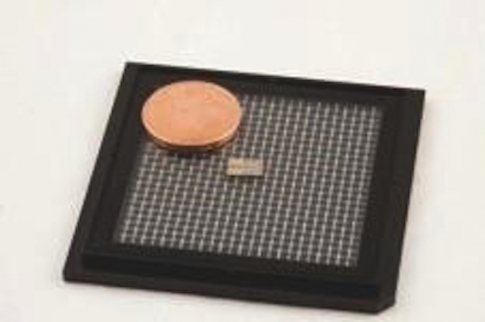InP chip could bring quantum encryption to mobiles

Random number generators are crucial to encryption during digital transactions such as buying products online or withdrawing cash from an ATM. Now a team from Spain and Italy have developed a random number generator chip made from InP that they say could deliver the most secure encryption keys in a package tiny enough to use in a mobile device.
In their paper in the Optical Society's journal Optica, the researchers from the Barcelona Institute of Science and Technology, VLC Photonics, the ITEAM Research Institute in Spain, the Politecnico di Milano, and the ICREA Catalan Institution for Research and Advanced Studies, propose and demonstrate a quantum entropy source for random number generation based on a photonic integrated circuit  (PIC) made possible by a design using two-laser interference and heterodyne detection.
The device, they say, is compatible with CMOS technology, opening the path to its integration in computation and communication electronic cards, which is particularly relevant for the intensive migration of information processing and storage tasks from local premises to cloud datacentres.
"We've managed to put quantum-based technology that has been used in high profile science experiments into a package that might allow it to be used commercially," said the paper's first author, Carlos Abellan, a doctoral student at ICFO-The Institute of Photonic Sciences, a member of the Barcelona Institute of Science and Technology, Spain. "This is likely just one example of quantum technologies that will soon be available for use in real commercial products. It is a big step forward as far as integration is concerned."
The new device operates at speeds in the range of gigabits per second, fast enough for real-time encryption of communication data, such as a phone or video calls, or for encrypting large amounts of data traveling to and from a server like that used by a social media platform. It could also find use in stock market predictions and complex scientific simulations of random processes, such as biological interactions or nuclear reactions.
Shrinking the truly random
The random number generators used today are based on computer algorithms or the randomness of physical processes -- essentially complex versions of rolling dice over and over again to get random numbers. Although the numbers generated appear to be random, knowing certain information, such as how many "˜dice' are being used, can allow hackers to sometimes figure out the numbers, leaving secured data vulnerable to hacking.
The new device, however, generates random numbers based on the quantum properties of light, a process that is inherently random and thus impossible to predict no matter how much information is known. Although other researchers have developed quantum random number generators, they have all been either larger or slower than the device reported in the Optica paper.
"We have previously shown that the quantum processes taking place exhibit true randomness," said Valerio Pruneri, who led the collaborative research effort. "In this new paper, we made a huge technological advance by using a new design that includes two lasers that interfere with each other in a confined space. This makes the device smaller while keeping the same properties that were used in the past experiments."
Creating a practical device
The researchers used InP-based photonic integrated circuit (PIC) technology to create two quantum number generators that together measure 6 by 2 millimeters.
"We proved that quantum technologies are within practical reach by exploiting PICs," said Pruneri. "Quantum random number generation as well as quantum cryptography and other quantum-based technologies will benefit from PIC-based technology because it allows one to build commercial and innovative products. Ours is a first demonstration."
'A quantum entropy source on an InP photonic integrated circuit for random number generation' by C. Abellan et al;.  Optica, vol 3, issue 9 (2016). Â


































